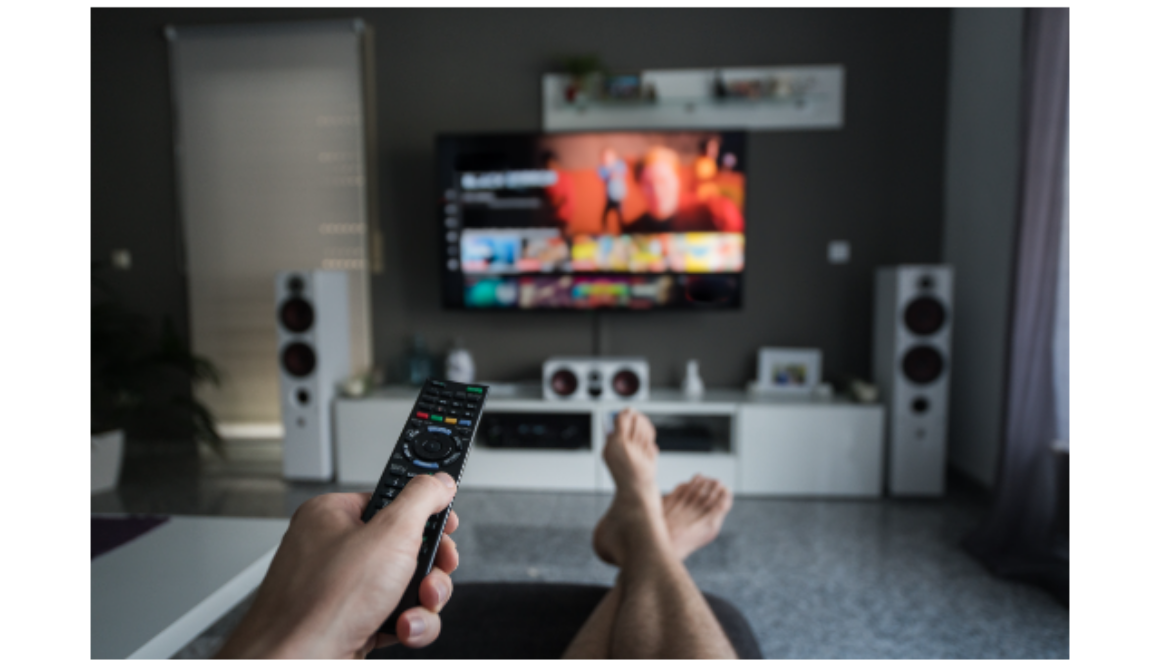5 Iconic Connected TV Ads We Love
Learn from the best connected TV ads to inspire your next advertising campaign. And find out what makes them work so well.
The big screen long stood as the major leagues of advertising. The performance marketing possibilities of mobile kicked linear TV back to the minors. Still, nothing else could replicate the commanding presence and unparalleled engagement of the big screen at the center of the home. But now that nearly nine in 10 US households own at least one CTV device, connected TV ads have reclaimed TV’s place in the majors.
CTV ads blend linear TV-like attention-commanding, household-reaching power and digital marketing’s performant precision. It’s easy to understand why brands both big and small are looking for the best connected TV advertising examples to emulate. We’ll get you started with wisdom pulled from some of the best connected TV ads out there. But first, let’s discuss the fundamentals of what makes these ads so enticing, entertaining, and effective.
What Makes for Great Connected TV Ads?
There are as many different ways to make connected TV ads as there are things to advertise. However, the answer to the question of “what is CTV advertising” lays out some clear qualities to look for in a connected TV ad. Here are three important characteristics to keep in mind:
- Targeted: Linear TV ads need to court the widest audience possible based on overall channel demographics or similarly broad outlines. CTV ads can be narrowly targeted based on household and individual device identifiers. This means an effective CTV ad will be tailored to the exact tastes of the brand’s desired audience.
- Memorable: TV advertisements get the most attention of any form of advertising. But attention itself is transitory. Effective connected TV ads capitalize on that attention by being as memorable as possible. Unexpected moments of humor, breathtaking visuals, emotional appeals are all great ways to make sure people remember your ad. Long after their program resumes.
- Interactive: Your advertisement doesn’t have to be a passive experience. CTV ads can encourage viewers to interact with them in some way, whether by choosing their preferred video to view, scanning a QR code, or beyond. This gives people a greater sense of investment in your brand’s messaging.
CTV advertising is opening up the most potent advertising medium in consumers’ daily lives to brands both big and small. If you’d like to learn more about how connected TV has become the new power move for advertisers, reach out to schedule a call with one our digital marketing consultants today.
5 of the Best Connected TV Advertising Examples
Now that we’ve laid out some of the best qualities to look for, here’s a set of five connected TV ads that were built for success.
Fiverr Highlights Small Business Transformations
This ad campaign spotlights small businesses that each punched above their weight during tough economic times. Thanks to Fiverr connecting them with the services they needed to grow. By focusing on the hard work and ingenuity of the people behind the businesses, the ad makes achieving a similar goal feel more attainable for anyone with a business idea.
Key takeaways:
- Be a storyteller: These ads work because they present compelling stories. Once you’ve had time to get invested, you see and hear about all the different ways Fiverr helped them transform their businesses.
- Be specific: These advertisements each spotlight different kinds of small businesses. The target audience for Fiverr’s message couldn’t be more clear: people who either already own a small business and want help to make it grow or are thinking of starting one.
Volvo Puts You In the Driver’s Seat
As a premium automotive brand, Volvo knows how to shoot good footage of its cars. A linear TV ad may show a few sweeping shots of a car weaving through city streets and the countryside and call it a day. However, the power of connected TV ads lets viewers take the experience into their own hands through different interactive tabs.
Key takeaways:
- Invite to interact: Viewers won’t always be in a position to directly engage with your ads. Therefore, interactive elements should never be required to deliver the message. By offering real value through extra information and personalized content, you can be sure more people will be willing to dig out their remote and give it a try.
- Keep the experience going: This ad invites users to input their phone number to receive info about the XC90 — a relatively high effort task. Fortunately, increased familiarity with QR codes means you can achieve a similar result by simply asking users to point their phones at the screen.
Enbridge Lights Up the Morning
Energy companies face a unique visibility challenge. The only time people tend to be aware of them is when something’s gone wrong. This advertisement from Enbridge uses the whimsical device of a rooster on an early morning journey. And manages to show some of the many ways it’s keeping our world running with a commitment to renewable energy.
Key takeaways:
- Be unique: Many of us can relate to the experience of witnessing an animal that seems to be on some kind of inscrutable mission. And suddenly the ultimate objective becomes clear. This plucky rooster’s expedition (and the surprised reactions of all who see it) is a cute, fun, and eye-catching draw for the commercial’s message.
- Feature reactions: Clearly the rooster is the star of the ad. But we get to see most of his journey through the context of the humans around him. Viewers (who are likely also surprised to see a rambling rooster on their TV) will relate to those people and be drawn in deeper by a desire to understand the story.
Meineke Makes a Telling Joke
Getting your car serviced is something people tend to put off whenever possible. The brand created a humorous ad campaign that shows another situation where it pays to be proactive. Encouraging drivers to get out ahead of their car service needs with a visit to their local Meineke Car Care Center.
Key takeaways:
- Be funny: Comedy is all about the unexpected. By presenting a familiar scene — a marriage proposal. This ad creates a winning comedic moment by turning it on its head. Better still, it’s a quick visual gag that doesn’t overstay its welcome. And likely to prompt a chuckle even if it isn’t the first time a viewer’s seen the ad.
- Be direct: With the joke made, Meineke makes its point. Waiting for your car to be paid off before you give it necessary repairs doesn’t make a whole lot of sense. The solution is equally simple — head into Meineke and use its financing options to keep your car running better without the wait.
Modern Fertility Makes a Sensitive Topic Approachable
Fertility is a subject that can be uncomfortable to address. This makes makes advertising a fertility testing service a unique challenge. Modern Fertility tackled the issue with a bright, friendly, and frank advertising campaign. And demonstrates its value proposition, especially compared to traditional testing alternatives. And leaves no room for the shame or embarrassment sometimes associated with reproductive health.
- Show your product: This ad features both the physical testing kit as well as the type of report you can look forward to receiving once it’s processed. By the end of the 30 seconds, you have a clear idea of how Modern Fertility’s process works. And how it will help you make better-informed decisions for years to come.
- Be approachable: Fertility testing is a complex science. And that’s evidenced by the stark and confusing traditional report briefly pictured in the ad. Modern Fertility uses that opportunity to present the clearly explained sections of its report. And pairs it with easy-to-understand narration from its co-founder.
If you’re ready to bring your brand’s message to audiences in a more measurable and impactful way, it’s time to get started with connected TV ads. And we’re ready to help. AlphaDigital has the most sophisticated performance advertising platform built for CTV advertising. We connect brands both large and small with access to over 95% of premium CTV inventory. And we streamline media buying and enable sophisticated measurement.








